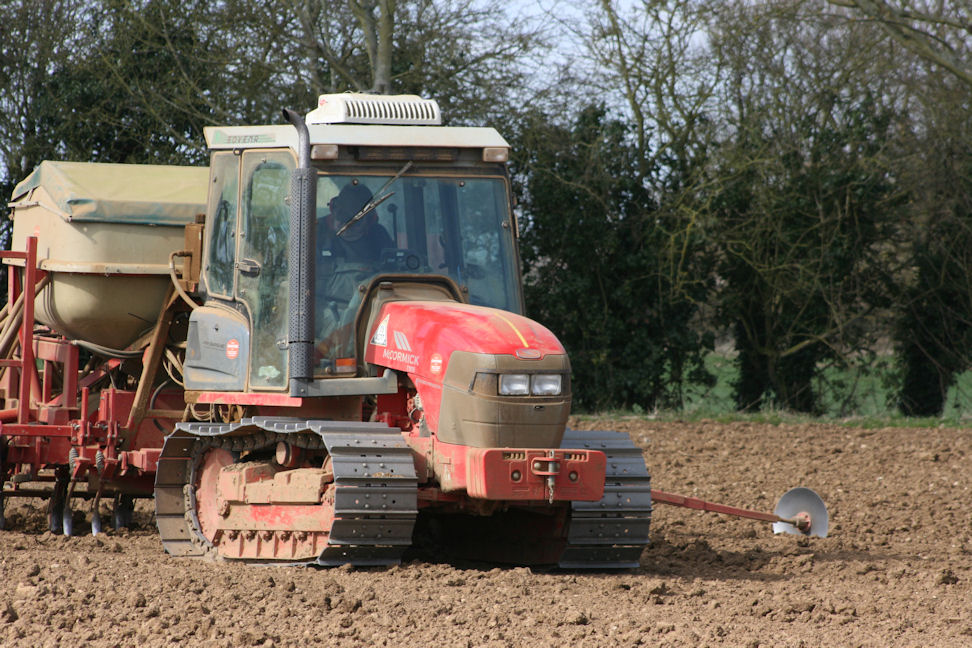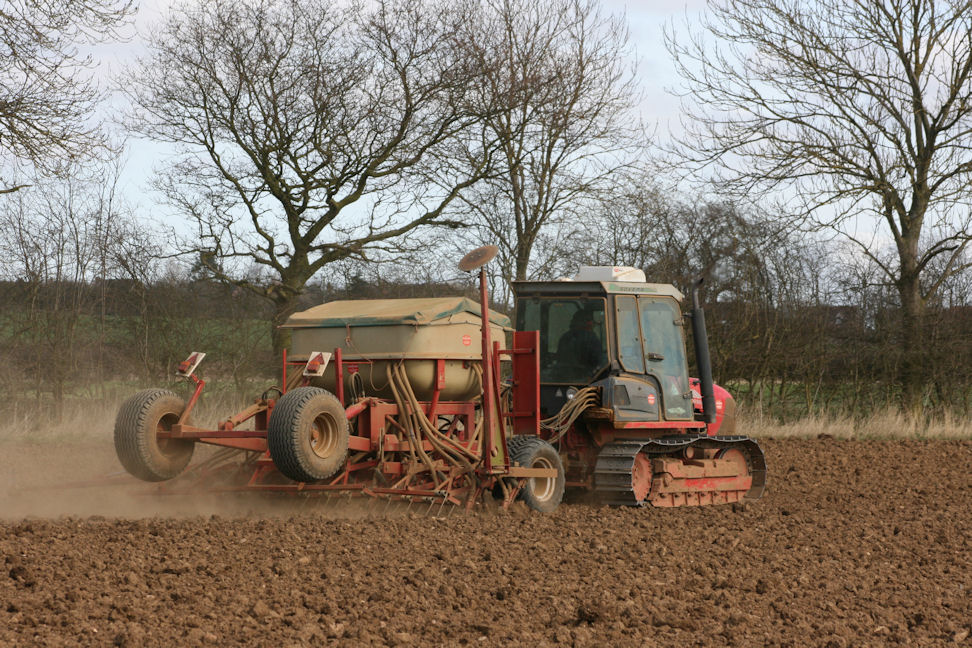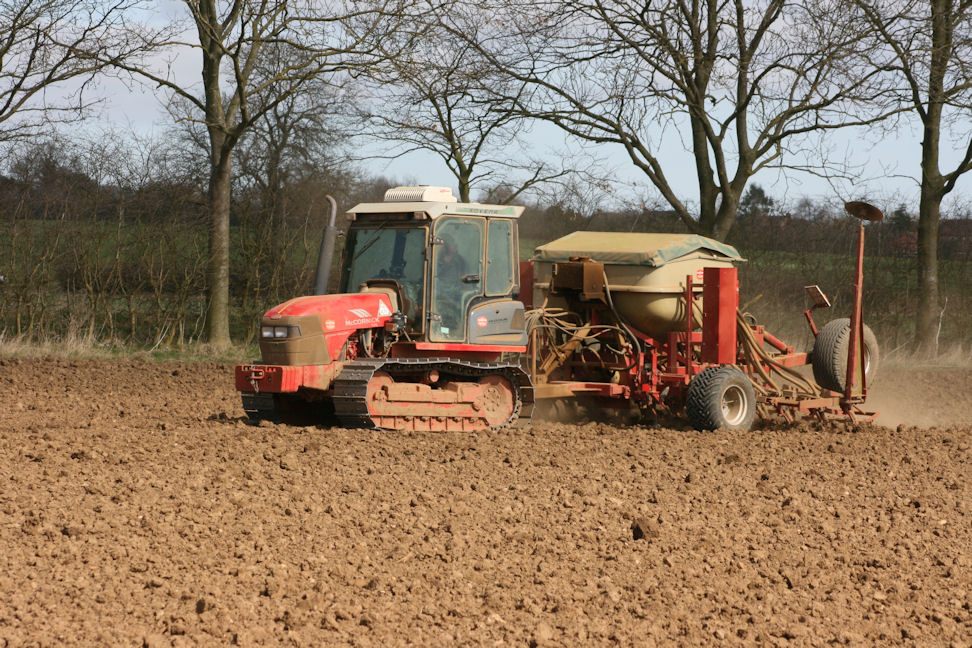
The McCormick name is well-known for its modern range of wheeled tractors – but seeing the name on the flanks of a tracklayer is something of novelty.
Yet a McCormick T105 crawler plays a key role on a Lincolnshire farm, spreading its weight across two steel tracks to avoid compaction when preparing land and sowing arable crops.
“Crawlers are a lot kinder on the land,” points out grower David Ruffell. “They spread their weight more effectively than a wheeled tractor, and that’s helpful in avoiding compaction.”
Although a McCormick crawler is a rarity in Britain, it is a more familiar sight in Italy, where small tracklayers are widely used for deep ploughing in hilly country when traction and stability are more important than outright power.

The machine is built by Argo Tractors, the manufacturer behind the new ‘X’ generation McCormick wheeled tractors, which have transformed the product line-up over the past 18 months with new engines, transmissions, electronics and cab designs.
In the UK, a handful of Argo-built crawlers are used for specialist operations in tree nurseries to minimise compaction and for mole drainage and other land works on boggy or difficult land because of the tractor’s flotation and stability.
The T105 is not a regular item on the McCormick price list but David Ruffell put in a special request to Lincolnshire dealer Robert H Crawford at Frithville near Boston for one to work on his 135ha all-arable farm at Spilsby.

Mr Ruffell is a long-standing fan of tracklayers, running Track-Marshall and Caterpillar tractors when he farmed heavy land in Bedfordshire, but they are no longer available, of course.
“If you want anything apart from a rubber-tracked crawler with 300hp there’s not a lot of choice,” says David Ruffell. “But the 100hp McCormick is fine for the amount of land we’re farming and suits me down to the ground.”
A 170hp wheeled tractor handles all the ploughing but the McCormick T105 takes over thereafter, working down the furrows with two passes of a 3.65m set of discs before drilling beans and malting winter barley using a 4m tine drill and rolling the finished seedbeds.
“Our soil is not exactly heavy but it’s inclined to compact pretty solidly and that’s why I use a crawler for the drilling and top work,” says Mr Ruffell.
Although the tractor is sometimes operated with mounted spring tine harrows, it is best suited to trailed equipment. So the drill has been converted from mounted to trailed configuration by fitting a hydraulic drawbar and rear-mounted transport wheels.
The McCormick tractor’s undercarriage has rear drive wheels, a front idler and five rollers within the 1650mm wheelbase and with 450mm track shoes fitted, its 4690kg operating weight (without ballast) is distributed over a contact area of approximately 7425sq cm.
“We’ve not had to touch the tracks after six years of use and I wouldn’t expect to for quite some time,” says Mr Ruffell. “And then the first maintenance job will only be to rotate the track pins.”
Power from the Perkins 1104D Series engine is channelled through a mechanical transmission with 16 forward and eight reverse speeds and the Hi-Drive steering system is a familiar arrangement of a lever-operated clutch and brake for each track assembly.
For other News and pictures of McCormick tractors from users and dealers, visit the McCormickAgriUK page on Facebook and follow McCormickAgriUK on Twitter.
